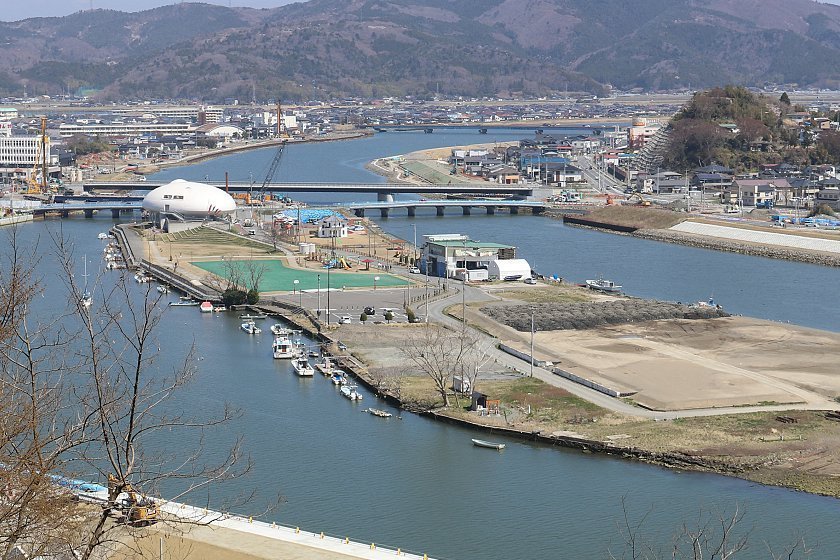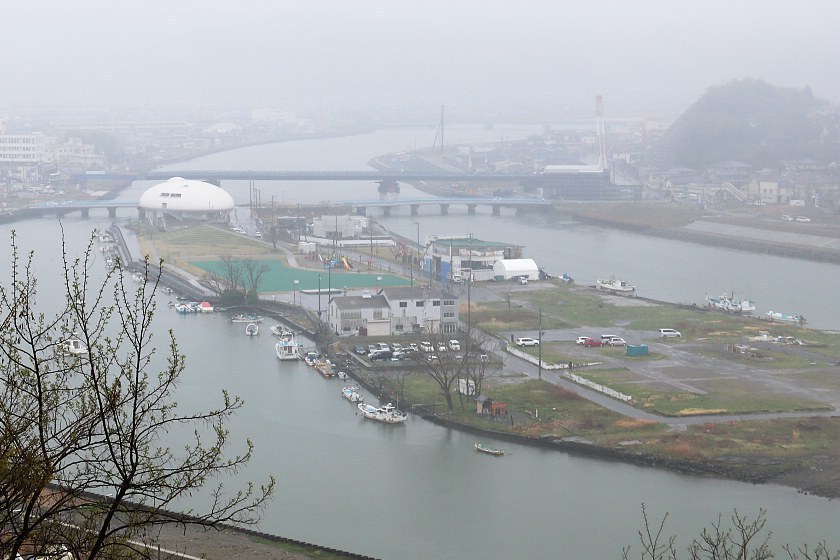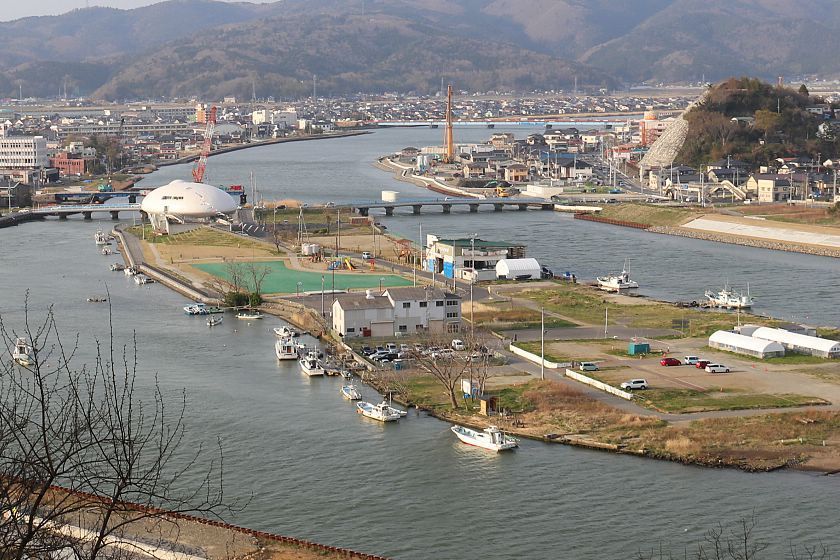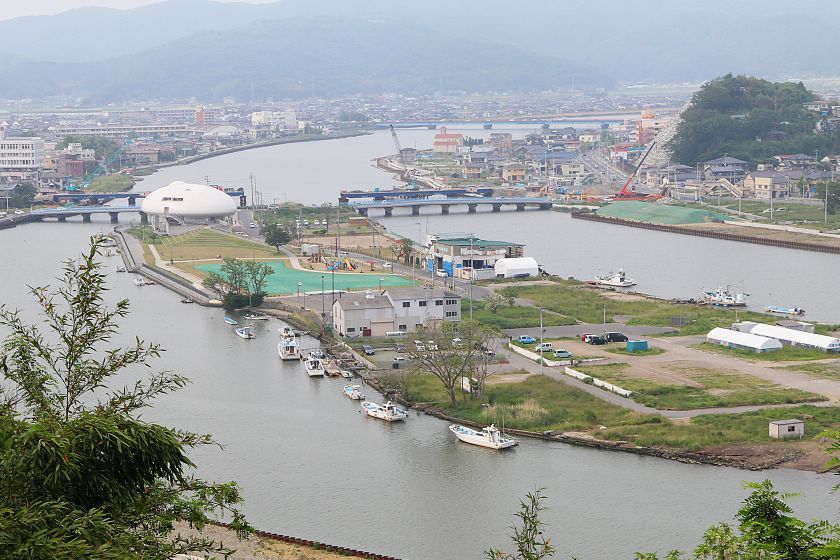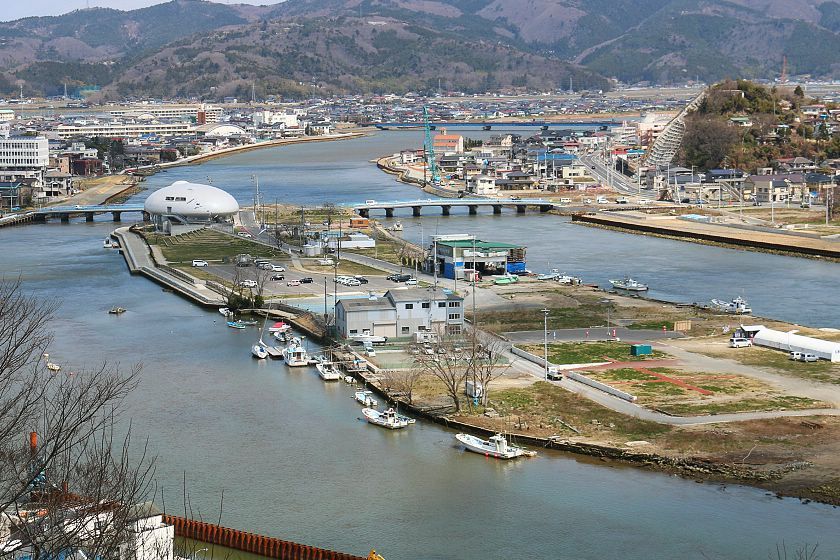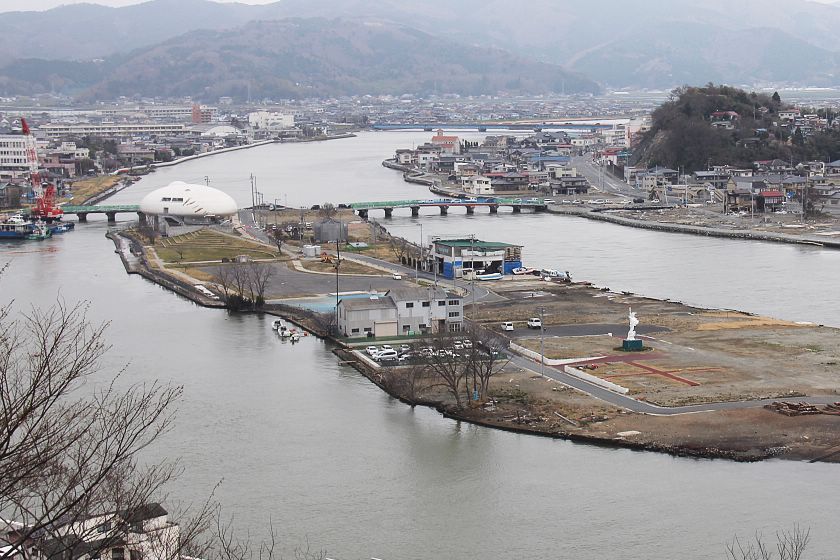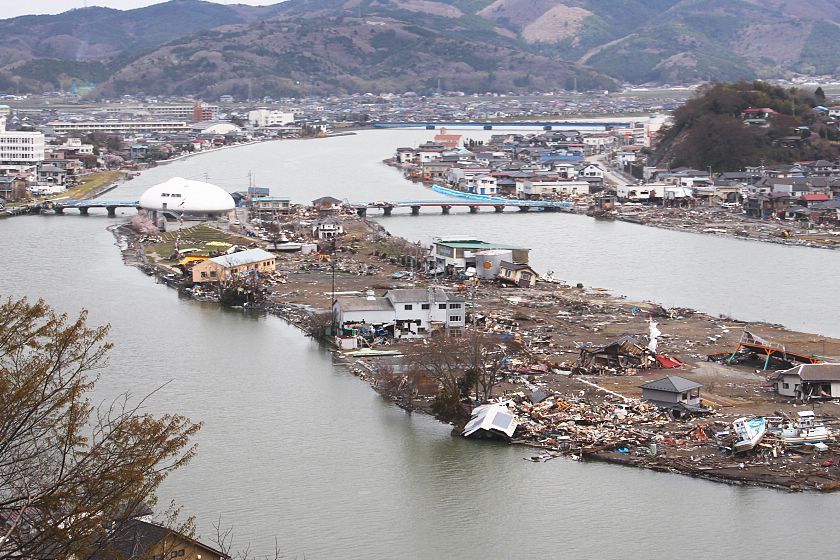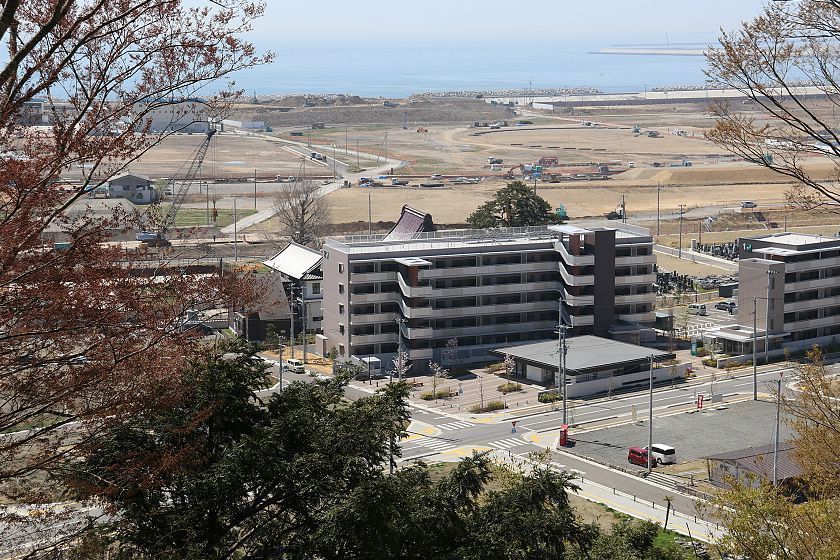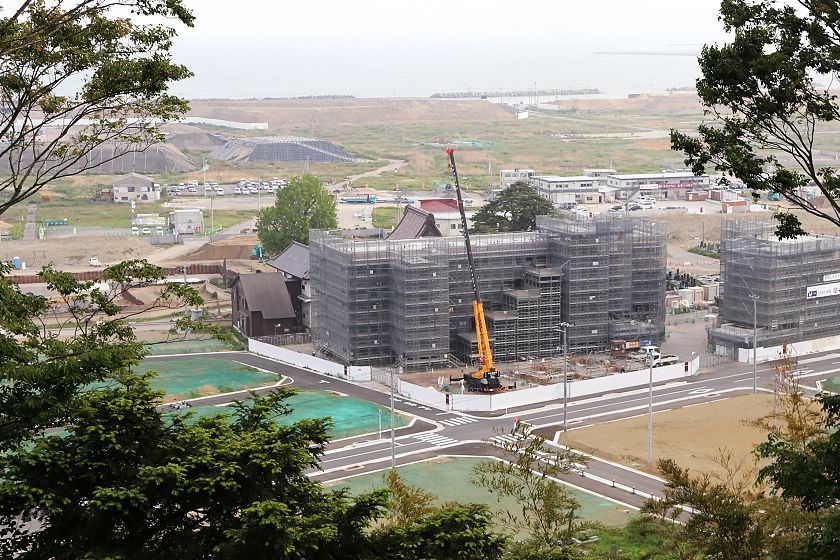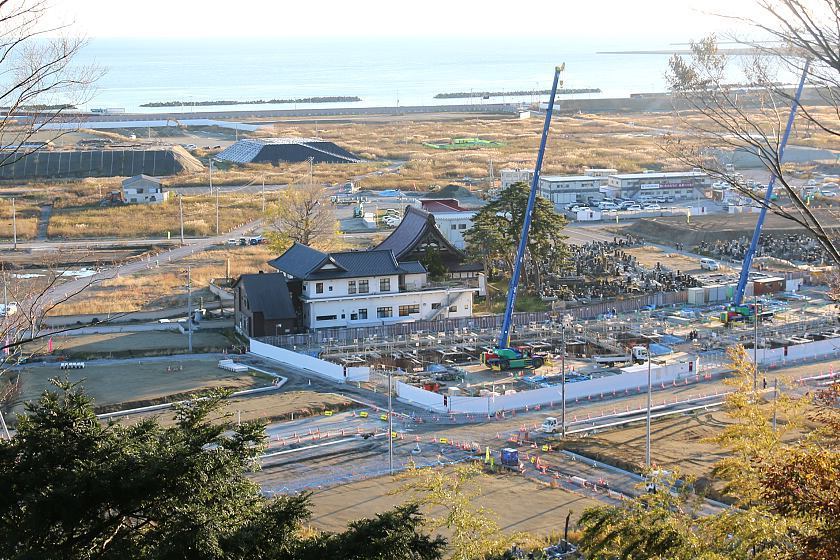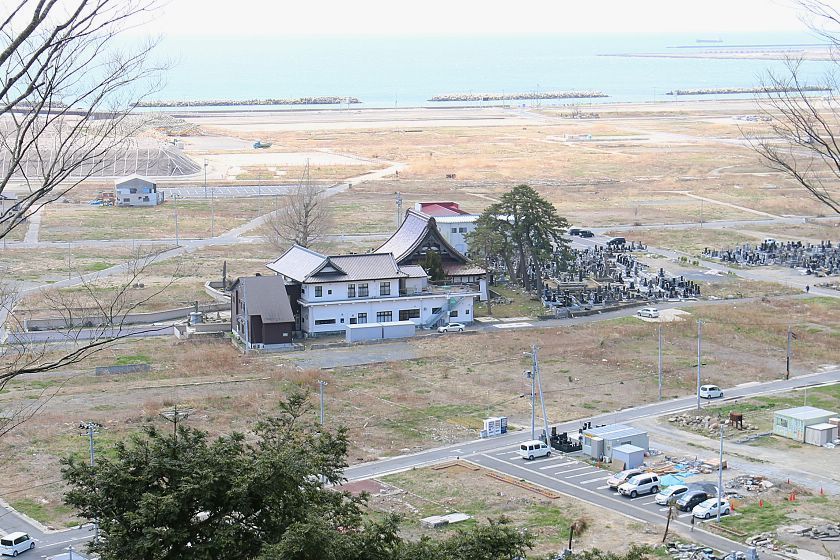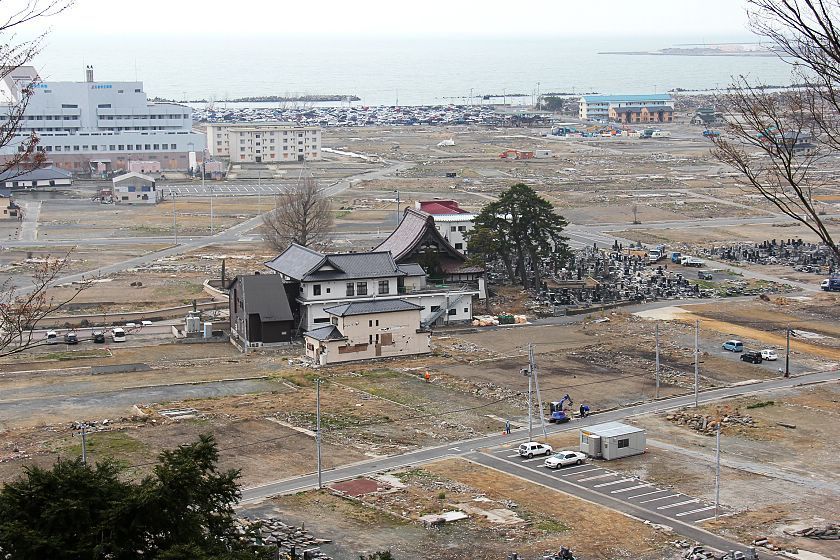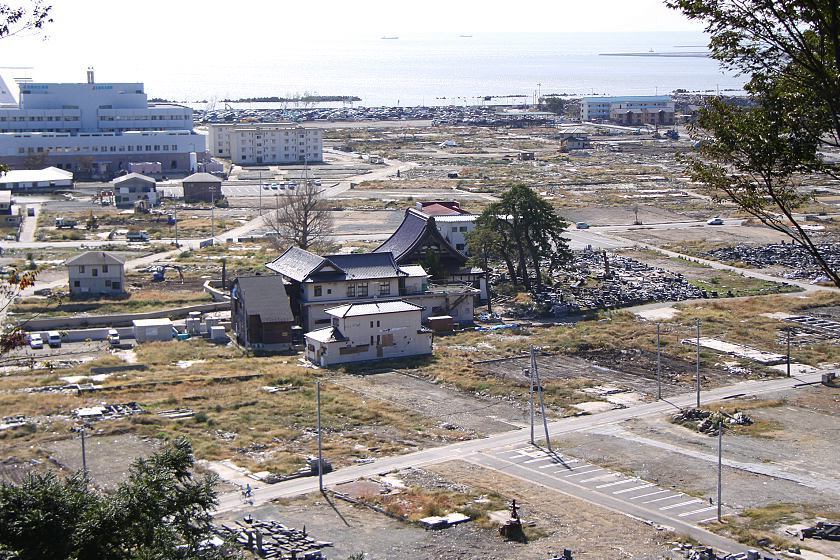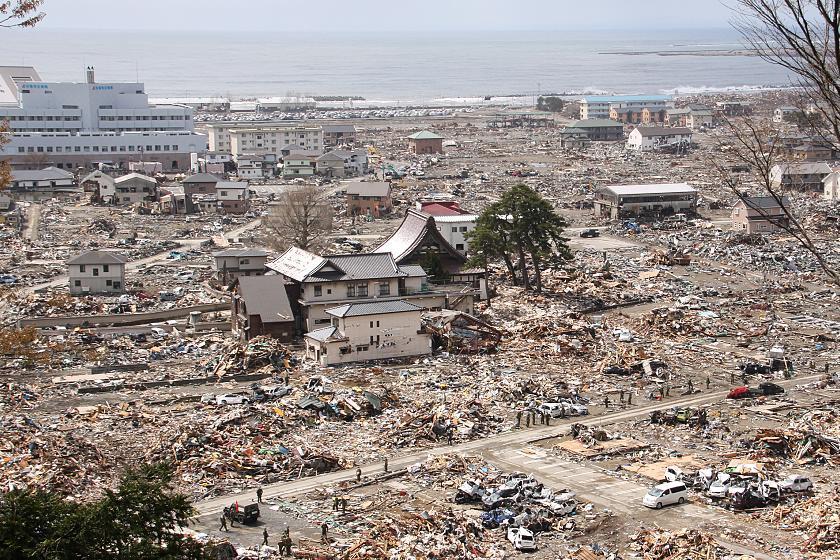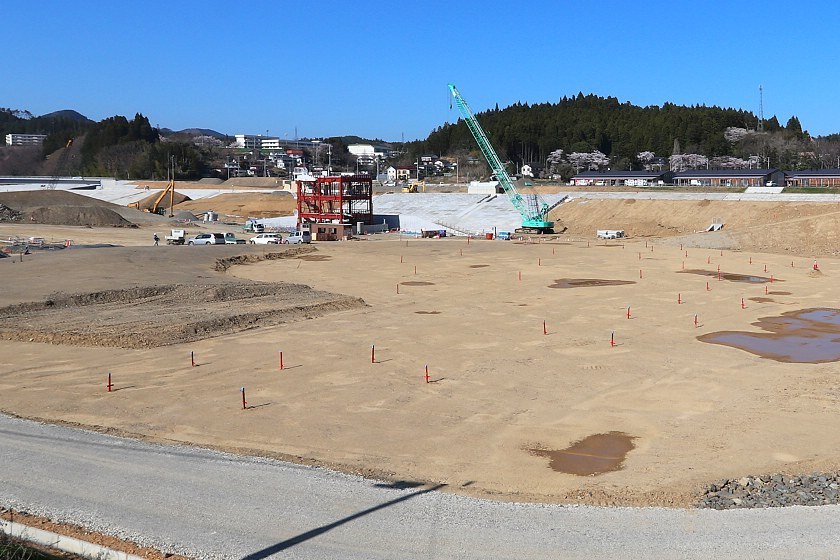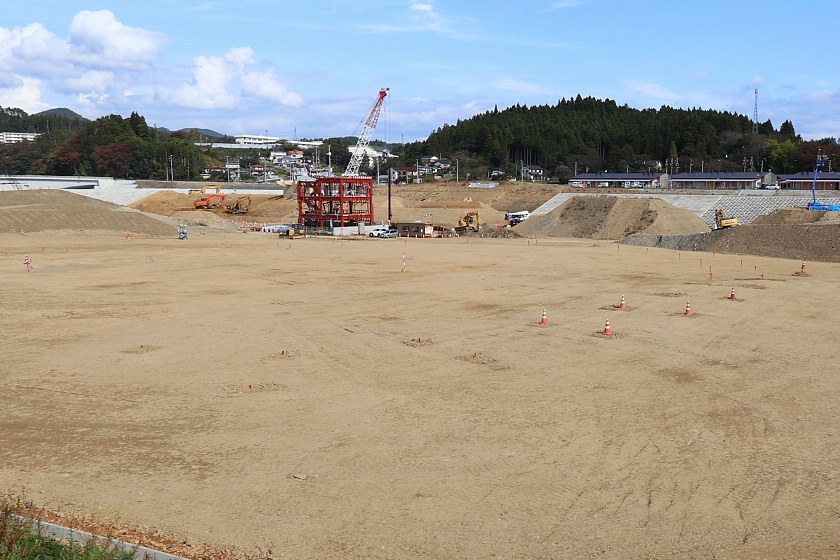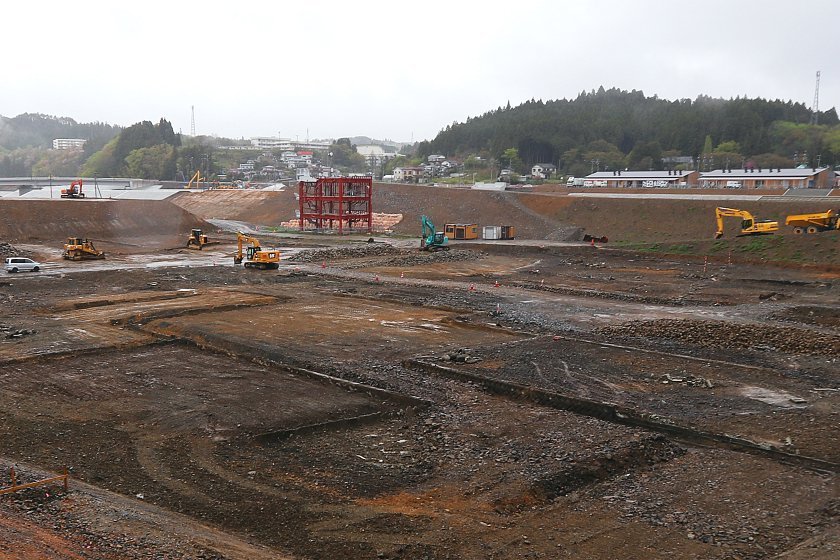Twelve years after the tsunami
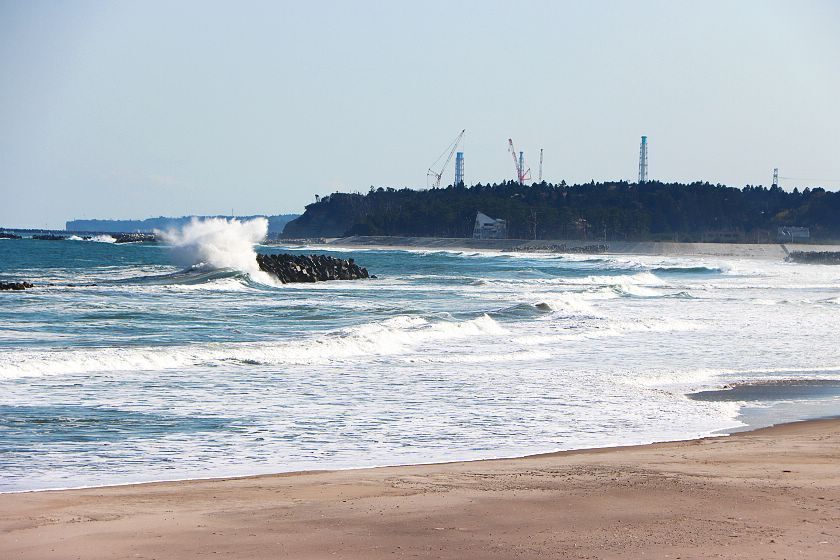
This is the 21st part of our open-ended series to document the recovery of the tsunami-hit coast of northeastern Japan, where nearly 20,000 people lost their lives and entire towns were destroyed in the afternoon of March 11, 2011. Twelve years after the tsunami, we traveled from Sendai to Rikuzentakata and revisited some of the worst-hit cities along the Sanriku Coast in Miyagi and Iwate prefectures on April 3-5, 2023. In addition, we revisited the coast of Fukushima Prefecture, which was additionally affected by the nuclear accident.

On the first day of our trip, we visited the coast around the Fukushima Daiichi Nuclear Power Plant, which suffered multiple meltdowns following the 2011 tsunami. Unlike further north along the coast, the reconstruction and recovery process here has been additionally delayed and complicated by the nuclear accident. A no-entry zone, which has been gradually decreasing in size and covers less than 3% of the prefecture, is still maintained, but even in the areas where the evacuation order has been lifted, the former inhabitants are slow to return.

On the other hand, the reconstruction works and newly opened business and research facilities have led to a certain influx of new residents, and the coastal towns near the nuclear plant - we revisited Tomioka and Namie this time - looked considerably livelier than during our previous visit five years ago. Many buildings damaged by the earthquake and neglect, which had still been standing five years ago, were torn down in the meantime, leaving behind town centers dotted with a noticeable number of empty lots.



Compare: Apr 2023 - May 2016


Our visit to Tomioka Town coincided with the peak of the cherry blossom season there. The town is home to one of Japan's most impressive sakura roads. For about two kilometers a road northwest of the town center is lined by hundreds of cherry trees, making for a spectacular sight. 2023 was the second year that the road could be enjoyed along its entire length again, as parts of it - and previously the entire road - were located inside the no-entry zone.




Further north in the town of Namie, we were surprised by the popularity of the Namie Michi-no-eki road station, which opened in summer 2020. The road station's food court was packed with tourists during the lunch hours, and the complex in general attracted lots of attention with its shops, restaurants and a playground, which features Pokemon figures. Quite a contrast to the deserted town we encountered five years ago!




In Namie we also visited the former Ukedo Elementary School, which was not only damaged by the tsunami, but had to be abandoned due to its location only five kilometers away from the nuclear plant. In the meantime, the school ruins opened to the public as a museum, displaying the damaged building. Not only the school was abandoned, but the entire nearby coastal village of Ukedo was hit by the tsunami and then left uninhabited by the nuclear accident. Few signs remain of the town, which the 2011 disaster tragically erased from the map.






Not far from the former elementary school and only about three kilometers away from the nuclear plant, work is ongoing on the construction of the Fukushima Prefecture Recovery Memorial Park, which is scheduled for completion by spring 2026.



Adjacent to the future memorial park stands the Denshokan or The Great East Japan Earthquake and Nuclear Disaster Memorial Museum, which was opened in 2020. The well done museum describes the events of the nuclear accident in detail with a video theater and a wide array of explanation boards, models and exhibits.






After our visit to the coast of Fukushima, we moved northward into Miyagi Prefecture, where our stay in Ishinomaki coincided with the peak of the cherry blossoms at Hiyoriyama Park. At the city's Genki Market, we enjoyed a pasta lunch with local oysters.


Compare: Apr 2023 - Nov 2022 - Apr 2019 - Apr 2018 - Apr 2017 - May 2016 - Apr 2014 - Apr 2012 - Apr 2011

Compare: Apr 2023 - Jul 2021 - Apr 2019 - May 2016 - Nov 2015 - Apr 2014 - Apr 2012 - Oct 2011 - Apr 2011




For the first time in four years, we also visited the town of Onagawa, where a rebuilt town center has emerged. The memorial park at the foot of the shopping mall in front of Onagawa Station was, furthermore, completed. The park is centered around the ruins of a police station that was toppled by the tsunami.

Compare: Apr 2023 - Apr 2015

Compare: Apr 2023 - Oct 2015

Compare: Apr 2023 - Oct 2015






We spent the night at the Hotel Kanyo in Minamisanriku, which offers amazing views of the Bay of Shizugawa. Several of the delicacies we were able to enjoy for dinner were harvested in the bay, which is famous for the farming of seaweed, oysters and other seafood.



In the town, we visited the memorial park and participate in a highly recommended learning program about natural disasters at the Minamisanriku 311 Memorial. For the first time in many years, it has also become possible for the public to access the ruins of the town's former railway station, Shizugawa Station, again.

Compare: Apr 2023 - Jul 2021 - Jul 2020 - Sep 2019 - Apr 2019 - Oct 2018 - Apr 2018




Compare: Apr 2023 - Apr 2011
Our next stop was the fishing port town of Kesennuma, where we stopped at the hilltop memorial park and in the Shishiori district.


Our last stop on this year's trip to the Sanriku Coast was Rikuzentakata, whose new city center has been growing considerably over the past five years.





